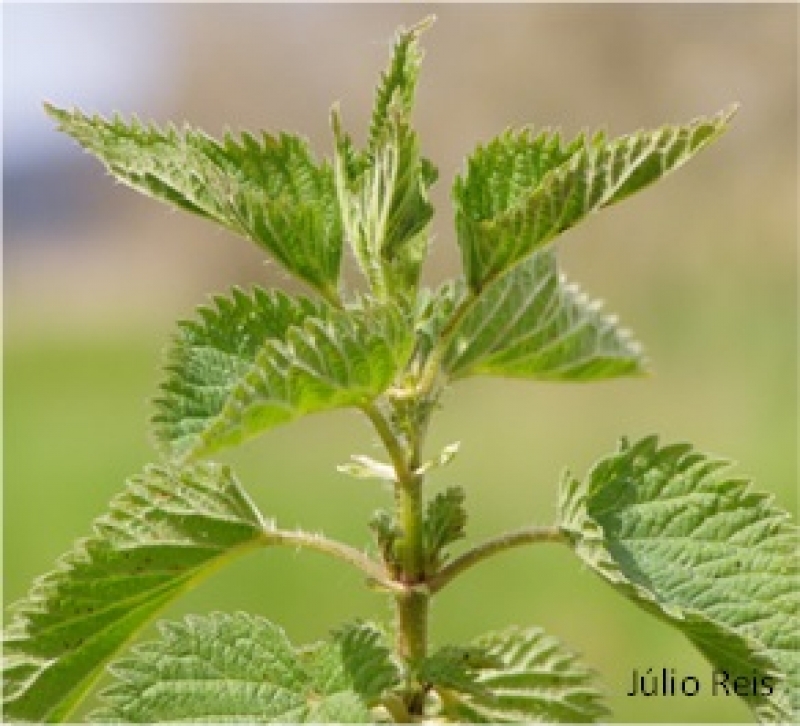
Make a Meal from Your Backyard
I was standing in my back yard today, looking around at all the grass that needed mowing, when I had a rather absurd thought: “If only humans could eat grass, we wouldn’t need to mow our lawns at all!” Now, if you have ever tried to eat grass, perhaps when you were in grade school (like I did), you will know that it doesn’t taste very good. Alright, it does have a slight sweetness to it that isn’t entirely unpleasant, but it also has the consistency of soggy newspaper and wadded up floss. Quite apart from its less than appetizing taste, the human digestive system is unable to extract nutrients from grass the way horses and cows do, so there’s no point in trying to mow your lawn with your mouth.
There are things growing in amongst the grass in your back yard that you can eat though. Stinging nettles, those bothersome and extremely painful weeds covered in itch producing hairs, are quite common in the North Country. They begin to show up in May, poking inquisitive shoots into the still cold mornings and continue to grow all summer. These wonderful (and for those unlucky enough to walk through them painful) plants can be cooked into a delicious spinach-like vegetable. Simply don a pair of gloves, cut off some young plants and steam for 3-5 minutes. I enjoy adding a dollop of butter on mine, but any seasoning is appropriate. Nettles are also an excellent source of iron and t
also an excellent source of iron and t he leftover water from steaming can be drunk as a nourishing tea. They can be found mostly in the tall grasses of meadows, roadsides, and the edges of lawns.
he leftover water from steaming can be drunk as a nourishing tea. They can be found mostly in the tall grasses of meadows, roadsides, and the edges of lawns.
Lambs Quarters (also known as pigweed) is another common plant with a similarly bothersome reputation. Most well-known for its status as a garden weed and denizen of waste places, this otherwise noxious plant is actually quite tasty. Eaten in small amounts it can be added to salads raw or it can be steamed to create a mild spinach-like vegetable.
If the weather is simply too hot and humid to even imagine cooking, then why not grab a few dandelion leaves and have a salad! It should be noted that only the young dandelion leaves are tasty to eat. After the plant has flowered the leaves acquire a bitter taste and, while still technically edible, are not at all enjoyable. If you like a little tartness in your salad, thrown in a handful of wood sorrel, which, despite its name, does not exclusively grow in wooded areas. Violets, which are quite edible, add an artistic touch too.
What other wonderful items are hidden amid that swath of ridiculously fast growing grass? Well, milkweed for a start. The leaves, immature flower buds and young pods can all be eaten as a vegetable, although I admit to having only tried the latter two. Harvest the flowers before they bloom, when they are still green and 1-2 inches across. Likewise, the pods should be picked when they are about 1-2 inches long. Both of these can be boiled or sautéed in butter. Because of the bitter principle that they contain it is recommended that you boil the flowers and pods 2-3  times. Place the harvested plant parts in water that has already come to a boil and cook for 3 minutes, then drain and return plants to a fresh batch of boiling water.
times. Place the harvested plant parts in water that has already come to a boil and cook for 3 minutes, then drain and return plants to a fresh batch of boiling water.  Doing this three times removes the bitter taste and creates a truly magnificent dish that is reminiscent of green beans. Serve with salt and butter or add to a stir fry. This is one of my favorite early summer treats, but you have to keep a watch to make sure the plants don’t mature while your back is turned. Start looking for the flowers soon and keep a lookout for the pods in late June and early July.
Doing this three times removes the bitter taste and creates a truly magnificent dish that is reminiscent of green beans. Serve with salt and butter or add to a stir fry. This is one of my favorite early summer treats, but you have to keep a watch to make sure the plants don’t mature while your back is turned. Start looking for the flowers soon and keep a lookout for the pods in late June and early July.
The list of wild plants that are edible is extensive and more detailed than I would have time to write about in a year. If you are interested in exploring the culinary delights of the fields and forests I would recommend Stalking the Wild Asparagus by Euell Gibbons. This is an excellent resource book and actually a rather enjoyable read. You could also take a look at ediblewildfood.com.
One final note that should be made is that some plants are not edible. I don’t mean to alarm you, but it is important to know the facts before biting into just any strange mushroom. After all, you wouldn’t want to end up like Alice and go tumbling down a rabbit hole. If you are unsure of a plant’s safety, check with one of the sources listed above and beware of edible plant look-alikes. Now, get out there and start gathering. The season of canned greens is over and this year the fresh produce will be coming right out of your own back yard!

